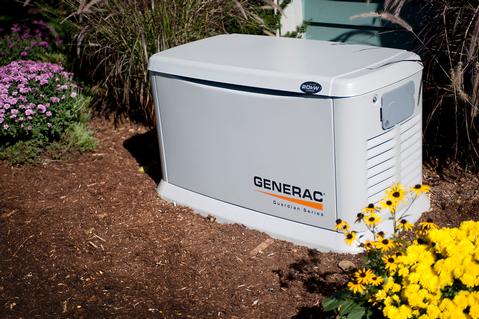Where to Install a Backup Generator
Choosing a location for your new home standby generator is pretty straightforward, but there are a few things to consider. Without proper planning, you could risk a generator malfunction, an insurance liability, or even risk the safety of your home. Choosing the right location for your backup generator can ensure you will get the most out of your investment.
Consult Local Codes and Manufacturer Recommendations
The first step to choosing where to install a backup generator is to consult your local building code authority for necessary requirements and permits. Keep in mind that local ordinances may vary from standard codes and supersede the manufacturer’s recommendations. Experienced electricians know how the ins and outs of local ordinances and codes and can resolve conflicts between installation instructions and local building codes.
Generator Placement
After reviewing local codes and manufacturer recommendations, there are a few other factors to consider before deciding on the final location for your backup generator.
• Place your generator where prevailing winds will blow the exhaust away from the home.
• Keep the generator away from bedrooms, living areas, and areas where the noise will bother your neighbors.
• Choose a location at least five feet away from openings such as windows, doorways, and soffit vents.
• Avoid areas subject to snow drifts or traffic.
• Avoid areas that might allow exhaust gases to accumulate.
• Choose an area that is at least three feet from flammable materials.
• Place the generator as close to the existing electrical service entrance as possible without getting too close.
• Maintain enough clearance to allow for generator service and maintenance.
• Choose an area with stable ground that does not flood.
Generator Pads
Once you’ve selected a location, you need to have it approved by your local code authority and obtain a building permit. If you skip this step, you’re just wasting time and money and creating a liability. A permit and passed inspection ensures that your insurance company will honor the policy in the event of fire or other damage.
Some areas require a concrete generator pad to be installed for the generator to sit on, whereas some localities allow generators to sit directly on a bed of gravel. The main concern here is that the underlying surface is level.
If a concrete pad is not required, you have other options. For example, a bed made from compacted sand with pea gravel on top makes a good generator pad. Otherwise, you can build a base of compacted sand, set a frame on top, and fill it with concrete. Some generator manufactures make custom composite pads specifically for their generators. These can often sit directly on the soil without a prepared gravel bed.
Midwest Generator Solutions: Local Generator Installer
Installing a backup generator is a good way to give yourself peace of mind during a power outage. Choosing the right location for your generator is a critical step to ensuring that you will get the most out of your investment.
The licensed electricians at Midwest Generator Solutions can handle all aspects of your generator purchase, installation, and maintenance. We can help you choose the right generator, make sure it is installed properly and safely, and maintain it to last for years. Connect with us on Facebook, submit this contact form, or give us a call today.


gyu97w
swa6os
avm77t
1e1mnr
Good day! I know this is kinda off topic but I was wondering if you knew where I could find a captcha plugin for my comment form? I’m using the same blog platform as yours and I’m having problems finding one? Thanks a lot!
2a2knf
hd182t
pqabln
Wow, amazing blog layout! How lengthy have you ever been blogging for?
you made running a blog glance easy. The entire glance of your web site is excellent,
let alone the content material! You can see similar here dobry sklep
2kjs84
w57p7d